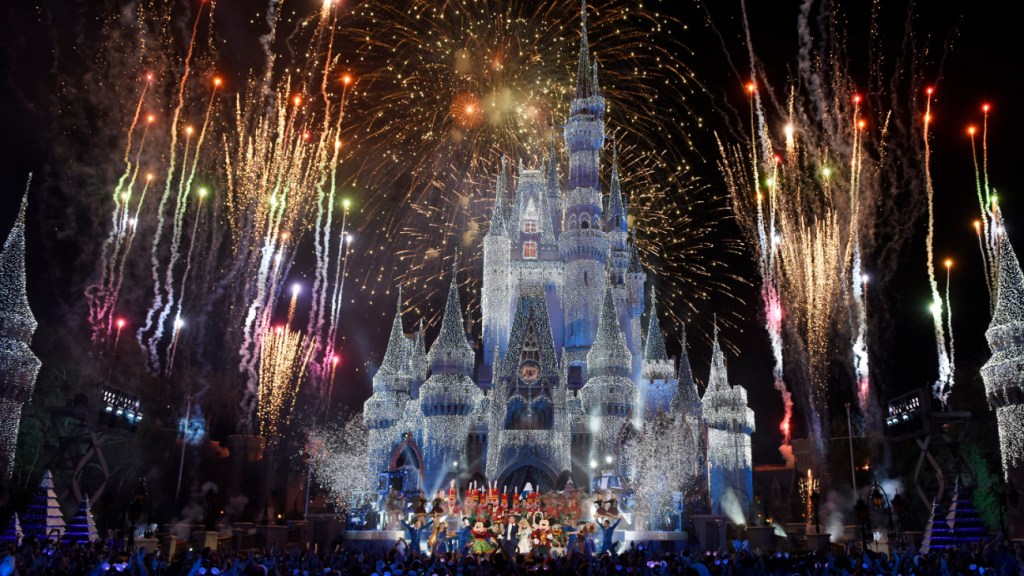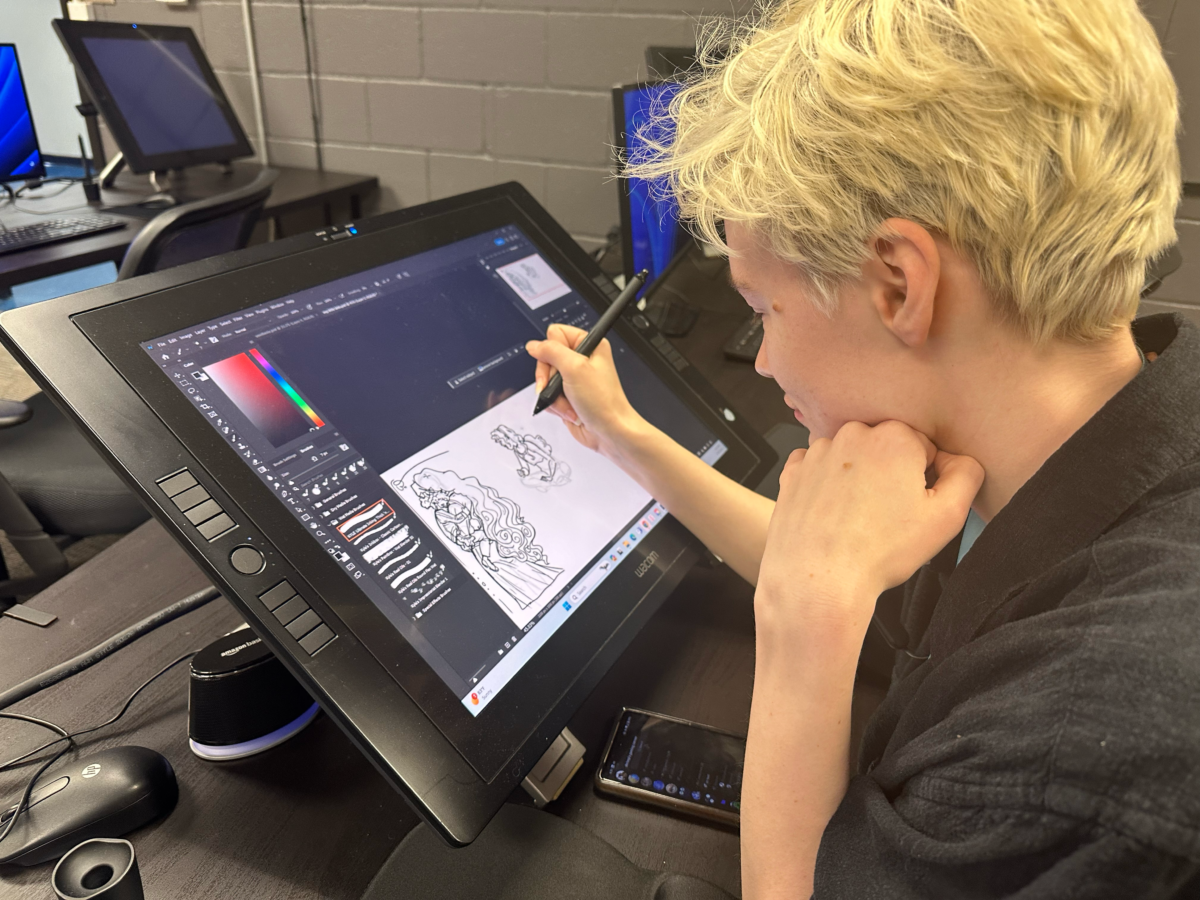Disney‘s decision to bring back long-time CEO Bob Iger to replace beleaguered Bob Chapek on Nov. 20, 2022 sent shock waves through Hollywood. The stock closed that week at $98.87 amid hopes he could right a struggling ship.
On Nov. 28 last year, Iger used a town hall meeting to outline first priorities and told staff that he did not expect the company to make any significant acquisitions during his second run as CEO. “We have a great set of assets here,” he said. “Nothing is forever, but I am very, very comfortable with each of the assets that we have.”
Fast-forward exactly a year, and some things have changed for the better for Disney, with Iger having focused on cost-cutting (putting Disney on track to achieve roughly $7.5 billion in cost reductions, up from the previously targeted $5.5. billion), streamlining and optimizing the company via restructuring moves.
But the conglomerate’s stock has remained under pressure, ending the pre-Thanksgiving session at $95.07, below its year-ago level, as investors and analysts are waiting for more clarity on Iger’s next steps for Disney.
MoffettNathanson analyst Michael Nathanson in a Nov. 9 report maintained his “buy” rating and $115 stock price target on Disney, noting the stock’s challenges over the past year. “On November 21, 2022, upon the news of former CEO Bob Iger’s return to The Walt Disney Company, we upgraded Disney to ‘buy’ with a $120 price target,” he wrote. “Despite Iger taking many of the quick and dramatic actions that we expected from him, Disney’s stock price is down 8 percent since our upgrade versus a 11 percent upward move in the S&P 500 over that time frame for a very disappointing 19 percent underperformance.”
In this environment, activist investor Nelson Peltz’s Trian Fund, one of the company’s largest shareholders, has boosted its stake in Disney further and signaled another potential push for board seats after abandoning a proxy battle in February in a big win for Iger. ValueAct Capital, another activist investor, has also built a notable stake in Disney and has been “in dialogue” with the conglomerate’s management, according to a recent CNBC report.
With that as a backdrop, Iger is getting ready to address another staff town hall Tuesday, Nov. 28, and observers will listen out for possible new hints or guidance for what the next phase of “building” will bring after the problem-solving phase.
After all, Iger said on a recent earnings call: “While we still have work to do to continue improving results, our progress has allowed us to move beyond this period of fixing and begin building our businesses again.” In line with that, an internal memo said that the town hall would focus on “future building opportunities” for the conglomerate. “Combined with our portfolio of valuable businesses, brands and assets — and the way we manage them together — Disney has a strong hand that differentiates us from others in our industry,” Iger argued.
The CEO also used the earnings update to share four strategic priorities: making Disney’s streaming business profitable, building ESPN for the digital future, “improving the output and economics of our film studios” and expanding the company’s live experiences business.
In September, Disney put a spotlight on that final priority, unveiling plans for a $60 billion expansion of its theme parks, cruise lines, and other products and experiences business.
But questions abound. “Disney is continuing on an ambitious cost-cutting strategy that likely is causing some uncertainty within the Magic Kingdom,” Third Bridge analyst Jamie Lumley warned in a recent report. “As the business looks to slash costs and make streaming profitable, there are sure to be concerns about cutting too deep and impacting the business going forward.”
With that in mind, Wall Street will listen out for possible color, body language or even outright updates on various topics during the town hall, at which Iger will be joined by film unit head Alan Bergman, Dana Walden, who leads the TV business, ESPN chair James Pitaro, and theme parks and experiences head Josh D’Amaro.
Here is a look at some of the key issues in observers’ focus.
Reenergizing the studios

Brie Larson as Captain Marvel/Carol Danvers in The Marvels.
Courtesy of Marvel Studios
Putting the studios back on a successful path is a particular priority for Iger. He has described his turnaround recipe as including a focus on core brands and franchises and “reducing output overall to enable us to concentrate on fewer projects and improve quality while continuing our efforts around the creation of fresh and compelling original IP.”
The CEO even acknowledged on the call “that our performance from a quality perspective wasn’t up to the standards we set for ourselves,” concluding: “We’re working to consolidate — make less, focus more on quality.” Only time will tell if the town hall will bring further updates on what this will mean for the studio slate.
However, financial evidence of improving trends is likely to take a while to materialize following the end of the Hollywood strikes and recent disappointments. “It will take multiple quarters in our view for the industry to get back to a normalized production cadence,” Morgan Stanley analyst Benjamin Swinburne wrote in a recent report. But with the SAG-AFRA strike resolved, “we should get more clarity over the fiscal year 2024 slate and the extent to which any films move into fiscal year 2025,” he added.
TD Cowen analyst Doug Creutz, who has a “market perform” rating and $94 price target on Disney shares, in a recent report expressed concern “that problems at the studio are more complex,” adding that “we markedly disagree with management’s prognosis.” Noting that the company indicated a heavy focus on core brands and franchises and reducing output overall “to concentrate on fewer projects and improve quality,” he wrote that management also said that “at the time the pandemic hit, we were leaning into a huge increase in how much we were making…quantity can be actually a negative when it comes to quality.”
Creutz’s take: “We don’t quibble with any of the broad strokes here; where we disagree is that too much film output is not actually what happened, at least when it comes to Disney’s key content engines.” The expert sees a different problem: “If the argument is that Disney spent too much money making non-branded films, largely as a result of the Fox acquisition (that Iger masterminded), fine, but even there we would say that overinvestment at the Fox studio shouldn’t have had any impact on what was going on creatively at Marvel and Lucas and the animation studios.”
Creutz’s conclusion: “Ultimately, Disney’s theatrical run during 2016-19 was unprecedented and is unlikely to be duplicated. However, performance can certainly be better than it has been over the last several years. However, we think improved performance is not just a case of quality over quantity; it’s going to take some difficult decisions about prioritization for film versus streaming, a better-curated mix of products in the pipeline, and probably a bit of new blood in the management ranks as well.”
Streaming progress

Jeremy Allen White in FX/Hulu’s The Bear.
Everett Collection
Disney has said that it plans to roll out a unified streaming experience domestically that effectively combines Disney+ and Hulu. Management’s hope is to increase engagement, create more advertising opportunities, lower user churn, reduce customer acquisition costs and increase overall profit margins. And the company’s target is still to turn profitable in its combined streaming businesses in the fiscal fourth quarter of 2024.
Disney is planning to launch a beta version of its new streaming bundle in December ahead of an official launch in early spring. Some have wondered if Iger could provide an update on this during the town hall. “The company also expects to continue actively exploring ways to address account sharing, but given the timing of planned rollouts, Disney doesn’t expect a meaningful impact from these actions until 2025,” Goldman Sachs analyst Brett Feldman wrote in a recent report.
PP Foresight analyst Paolo Pescatore said Disney’s recent quarterly earnings were “encouraging” for the streaming business and showed “Iger’s turnaround plan in full swing.” He particularly touted Iger’s focus on getting to streaming profitability, saying the firm seems to be benefiting from what he dubbed “the Netflix effect.” Explained Pescatore: “Integrating Disney+ along with Hulu…in the future will put the company in a strong position to drive subs, engagement and, importantly, revenue either through subscription or advertising.”
Overall, the analyst sees Iger using cost cuts to free up money for focused investment. “These latest results clearly underline a razor-sharp focus on efficiencies across the board while focusing on content,” he said. “This is in stark contrast to other traditional rivals who lack the same scale as Disney in this new streaming-driven world.”
But others remain more cautious. “We don’t doubt that Disney will attain streaming profitability; it’s just a question of how much,” TD Cowen’s Creutz warned in his recent report. “The amount of degradation they see in the rest of the entertainment business also matters, and ultimately how much growth they can get out of the combined total. While this may well work out OK on balance over the long run, we still view the outcome as extremely cloudy, and likely to remain so for the next few years.”
Dealmaking

Getty Images
While Iger signaled no big acquisition plans a year ago, talk about various deals and possible deals has since moved into focus. Early this month, Disney agreed to take full control of Hulu in a deal with Comcast, which has owned a third of the streamer ever since Disney’s acquisition of the 21st Century Fox entertainment assets. Disney expects to pay $8.61 billion by Dec. 1, meeting the floor valuation for Hulu agreed with Comcast, but will go through an appraisal process with the selling partner to determine if and how much more the company may need to pay.
Disney could use the town hall for an update on Hulu. Some analysts expect a deal for Disney’s India business, including streamer Disney+ Hotstar and Star India, could be next — whether an outright sale, the sale of a stake or a joint venture. After all, Disney’s footprint in India has come with a substantial cost.
Wall Street has also been waiting for more clarity on the potential sale of Disney’s linear TV assets and a stake in ESPN. While the conglomerate did not announce a partner for ESPN with its earnings update, “it reiterated that it has seen strong interest from parties that could assist with marketing, technology, distribution and new content,” highlighted Feldman.
Meanwhile, Swinburne doesn’t expect any near-term news on a possible deal for Disney’s linear TV assets. “The cord-cutting and advertising trends remain challenging heading into fiscal year 2024,” he wrote recently. “While Disney has discussed publicly the potential for asset sales in this group, it does not sound like a near-term priority to us. Rather, operating these businesses more efficiently appears to be the near-term goal.”
Whether or not he is right, any town hall commentary on the likelihood, possible focus or timing of any potential Disney deals would draw much interest from analysts, investors and company staff alike. “Disney is at a fork in the road and needs to choose what path to take,” Third Bridge analyst Lumley said in a recent report. “Although the company delivered improved streaming results in its most recent earnings, Disney’s linear business continues to come under pressure both in the U.S. and internationally. If Disney wants to divest businesses, it needs to make a decision before the declines become too severe.”
Even in the absence of tangible news or developments on that or other fronts, the town hall will give Iger and his team a chance to reiterate key strategic priorities and messages to boost staff and investor confidence — and to keep doubters and critics at bay.
Some on Wall Street came out of earnings season liking what Iger has done and predicting more upside ahead. Bank of America analyst Jessica Reif Ehrlich, for example, remains optimistic for Disney despite a rocky road to recovery. She reiterated her “buy” rating on Disney shares with a $110 price objective. “While several strategic questions remain, we remain confident in Bob Iger’s ability to navigate the company through this transition period,” she wrote. “Near-term catalysts include additional updates on strategic priorities for Disney, continued robust theme park demand.”
In his recent report, Nathanson summarized his take on Iger’s work and Disney’s stock this way: “Real change takes time.” His explanation for the stock’s struggles: “A combination of linear pressures (weaker global advertising revenues, accelerated U.S. cord-cutting, higher sports costs), poor global box office performance and slower DTC revenue growth have been the driving factors of the underperformance.”
The expert then shared a somewhat mixed review of Iger’s various initiatives so far. “On a brighter note, Iger quickly (like day one) returned the organization to its prior structure,” he highlighted. “Further, he has aggressively raised price on Disney+ and reduced regional content investment and non-core general entertainment spend to focus the product back to core consumer expectations. The impact from these two moves are not immediately measurable as content slates take a while to develop and existing amortization from over-investment stays on the (profit and loss statement) for a few years.”
Meanwhile, “on the negative side, Iger’s open and honest disclosure about his worries about the long-term health of the linear networks has frustrated the market because it wasn’t matched by an immediate action step. As such, we have been needlessly left wondering and postulating about assets that are no longer drivers of future company earnings.”
Overall, though, Nathanson sees a light at the end of the tunnel. “Disney appears to actually be on the precipice of improving financial returns in the non-parks divisions of the company,” he concluded. “The single most critical take-away from the fiscal fourth-quarter earnings call and press release is the focus on driving free cash flow back to pre-pandemic levels.”
Guggenheim analyst Michael Morris is also bullish on Disney’s outlook, recently maintaining his “buy” rating with a $115 stock price target. “We are bullish on intense content quality focus, moving past Hulu-ownership complications to maximize asset value, right-sizing spending, and giving more consumers more opportunity to pay for ESPN via a direct distribution tier,” he wrote, lauding Iger’s strategic initiatives. But he also mentioned an area of regret, saying: “We are lukewarm on the incremental value of more Hulu/Disney+ integration, we wish the company would get more aggressive with the Hulu virtual multichannel video programming distributor (vMVPD) and are bearish on potential substantive impact from ‘strategic partners’ from the tech and content (e.g., sports league) community.”
Lumley also sees challenges for the Disney CEO and his team in outlining his vision for a brighter future. “Bob Iger has talked about how he wants to move beyond fixing problems to building businesses,” he said. “This could be a hard message to sell as the studio segment limps through some recent disappointing box office results like The Marvels, even while there are ambitious future plans for the company, like launching ESPN as a fully-fledged streaming platform and integrating Hulu into Disney+.”




